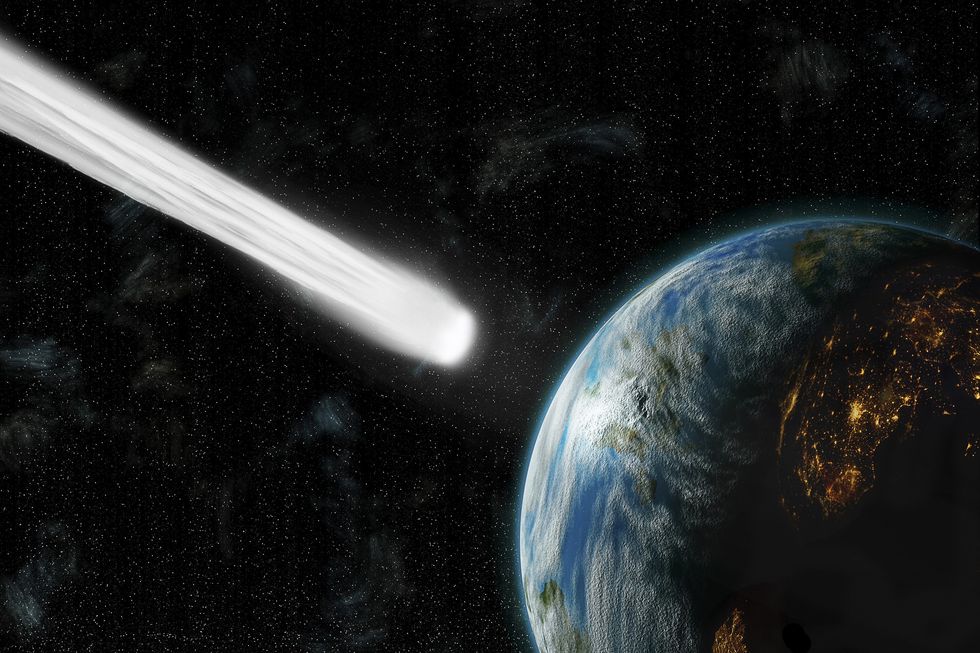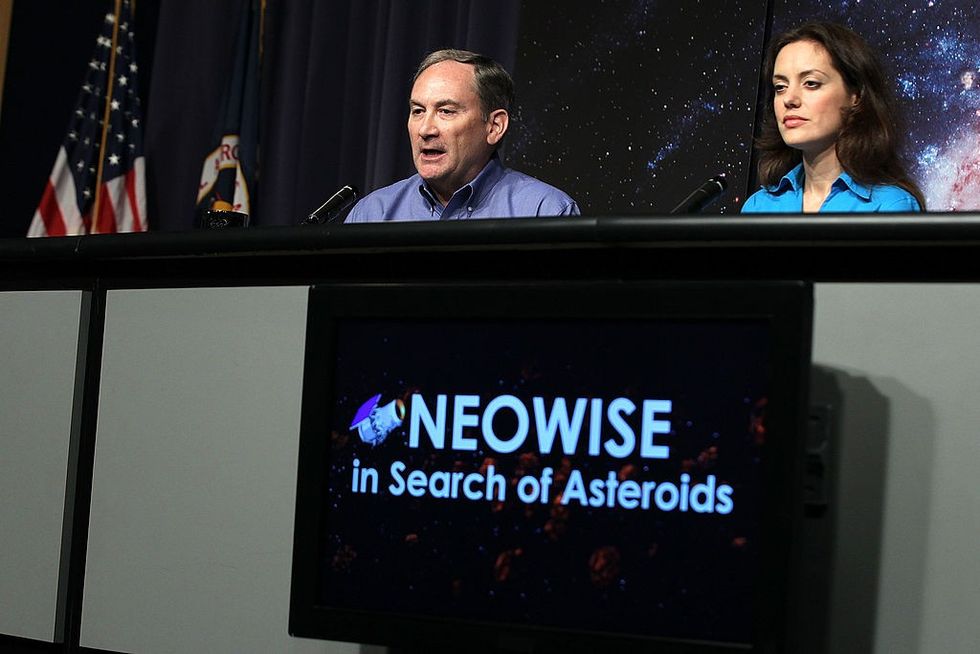Nasa has explained how they would alert the global population if a dangerous asteroid was hurtling toward Earth.
It comes as the agency's Planetary Defense Coordination Office has been tasked with identifying an incoming threat decades in advance.
Last month, the agency said Earth was in the clear from a projected one in 10 million chance of a collision on March 3.
If a doomsday impact was imminent, a global coalition of astronomers called the International Asteroid Warning Network would be warned. If they agreed with the threat, the situation would be escalated.

The Planetary Defense Coordination Office has been tasked with identifying an incoming threat decades in advance (file pic)
Getty
Lead program executive for the Planetary Defense Coordination Office Lindley Johnson said: "We definitely want to find all those before they find us."
Johnson told Business Insider that the office keeps track of the 2,300 known asteroids in the solar system, with an especially watchful eye on the 150 or so that could cause an extinction event.
He added: "I don’t have a red phone on my desk or anything...but we do have formal
procedures by which notification of a serious impact would be provided."
If the space rock was expected to have an international impact, the United Nations Office of Outer Space Affairs would get involved.
LATEST DEVELOPMENTS

Cast of Netflix's Don't Look Up Scott Stuber, Jennifer Lawrence, Leonardo DiCaprio, Meryl Streep and Jonah Hill
Getty
The scenario was satirised in the 2021 Academy Award nominated Netflix film, Don't Look Up, which starred Jennifer Lawrence and Leonardo DiCaprio as scientists, desperately trying to warn politicians and the media about the impending doom of an incoming asteroid.
Much like in the film, diverting a dangerous asteroid with a human projectile has been touted as a possible solution to a potential apocalypse causing space rock.
The agency rammed a small spacecraft into a 530-foot-wide space rock millions of miles away at 15,000 miles per hour in 2022, successfully diverting its course in a test run of a potentially Earth-saving mission.
Nasa plans to try more deflection methods in the future, including a “gravity tractor” technique, where a spacecraft would be deployed to shadow an asteroid and pull it out of orbit with gravity.

Lindley Johnson speaks with principal investigator NEOWISE of NASA Amy Mainzer
Getty
However, Business Insider reports that those options would not be viable if the asteroid was detected less than five years before an impending impact, and if there were only a few months of warning, there wouldn’t be much to be done to avert the crisis.
There is a 1 in 2,700 chance that Bennu, a small near-Earth asteroid, will collide with Earth in 2135.
In order for that to happen, Bennu would need to passes through what Nasa dub a "gravitational keyhole."
Johnson was quick to reassure, saying: "That gives us plenty of time to then try to do something about them while they’re still in space, so that we completely avoid any catastrophe here on Earth."
https://news.google.com/rss/articles/CBMiQmh0dHBzOi8vd3d3LmdibmV3cy5jb20vbmV3cy91cy9hc3Rlcm9pZC1hbGVydC1zeXN0ZW0tY29uZmlybXMtbmFzYdIBAA?oc=5
2024-02-19 15:09:09Z
CBMiQmh0dHBzOi8vd3d3LmdibmV3cy5jb20vbmV3cy91cy9hc3Rlcm9pZC1hbGVydC1zeXN0ZW0tY29uZmlybXMtbmFzYdIBAA
Tidak ada komentar:
Posting Komentar